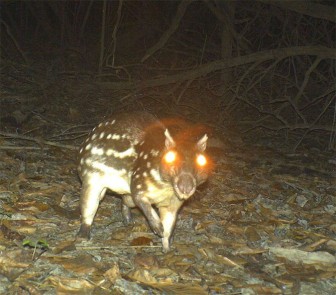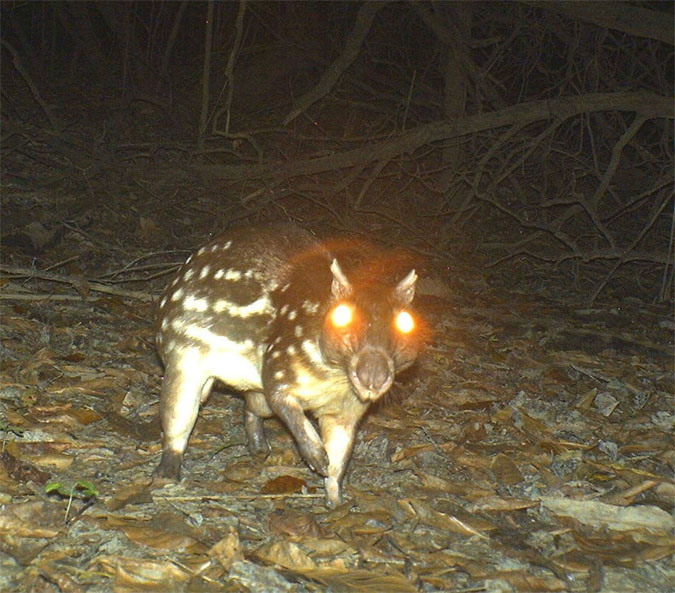Labba (Cuniculuspaca), Paca or Urana in Makushi – no matter the appellation, most Guyanese recognize the name of this animal and associate it with a tender, succulent meat dish!
This large rodent ranges from South East Mexico to Southern Brazil and North Paraguay; once common in Trinidad, where it is known as ‘Lap,‘ it has been hunted to near local extinction.
It is listed as Appendix III by the Convention on International Trade for Endangered Species (CITES), and least concern by IUCN Redlist. However, because it is prized as a game animal, efforts should be made to manage this species for sustainable hunting yield in its range to ensure its role both ecologically as well as gastronomically, as it can be threatened locally because of over harvesting.
Labba are large rodents that can weigh up to 13 kg. They have short, coarse chestnut brown fur with three or four lines of large white spots running across their flanks while their under parts are completely white. They have a large rump, short legs with four toes on the fore feet and five on the hind feet, and with their large head, swollen looking cheeks and large round eyes they look like a tiny capybara in profile.
Labba are nocturnal and solitary vegetarians. They are forest animals and walk heavily and noisily on dry leaves in search of fallen fruits, nuts on which they browse. They will also venture into farms and rural areas to feed on fallen fruits such as mangoes. As their diet includes nuts and fruit, they are important seed dispersers in the forest. They tend to create caches of seed and forget where they are buried. This behaviour helps to ensure the regeneration of diverse forest growth.

Rain forests are rich in biodiversity and are home to many different plants and animals as well as indigenous communities. Humans, even those who don’t live in the rain forest, rely on it for resources such as building materials (wood and lianas), medicine and fruits. Rain forests also provide essential environmental services for life on earth; they create soil as well as prevent soil erosion, produce oxygen though photosynthesis, maintain clean water systems, and are a key defence against climate change.
The Iwokrama Rain Forest is 371,000 hectares, located in the heart of Guyana. Our mission is to develop strategies for conservation and sustainable development for local people in Guyana and the world at large. We are involved in timber, tourism and training. Come and visit us in the rain forest or at http://www.iwokrama.org.

